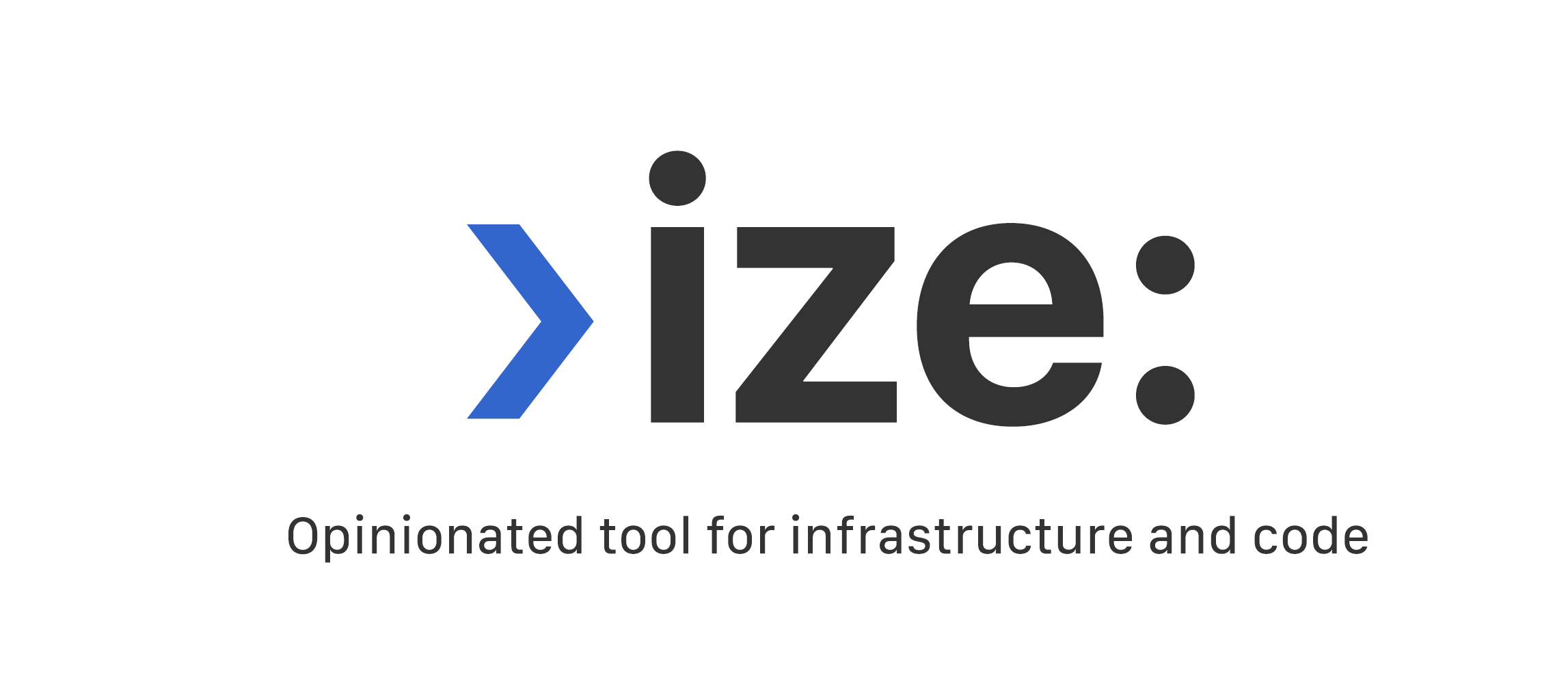github.com/hazelops/ize@v1.1.12-0.20230915191306-97d7c0e48f11/README.md (about) 1 [](https://github.com/hazelops/ize/actions/workflows/release-dev.build-and-publish.yml) 2 [](https://github.com/hazelops/ize/actions/workflows/release-prod.build-and-publish.yml) 3 [](https://codecov.io/gh/hazelops/ize) 4 5  6 # ❯ ize: 7 _Opinionated tool for infrastructure and code._ 8 9 This tool is designed as a simple wrapper around popular tools, so they can be easily integrated in one infra: terraform, ECS deployment, serverless, and others. 10 11 It combines infra, build and deploy workflows in one and is too simple to be considered sophisticated. So let's not do it but rather embrace the simplicity and minimalism. 12 13 14 ## Quickstart 15 ## Installation 16 ### MacOS: 17 _[Homebrew](https://brew.sh/) is used on MacOS. Add a tap and install the latest stable version:_ 18 ```shell 19 brew tap hazelops/ize 20 brew install ize 21 ``` 22 23 ### Ubuntu: 24 _Add public apt repository, update the apt cache and install the latest stable version:_ 25 ```shell 26 echo "deb [trusted=yes] https://apt.fury.io/hazelops/ /" | sudo tee /etc/apt/sources.list.d/fury.list 27 sudo apt-get update 28 sudo apt-get install ize 29 ``` 30 More information on [other platforms](DOCS.md#installation) 31 32 ## Autocomplete: 33 ### MacOS & zsh: 34 Enable autocompletion 35 ```shell 36 echo "autoload -U compinit; compinit" >> ~/.zshrc 37 ``` 38 Load autocompletion on every session 39 ```shell 40 ize gen completion zsh > /usr/local/share/zsh/site-functions/_ize 41 ``` 42 43 More information on [other platforms & shells](DOCS.md#autocomplete) 44 45 46 ### Init the project from a template 47 If starting from scratch, create a git repo and init a new project. Follow the setup 48 ```shell 49 mkdir squirrelcorp-backend 50 cd squirrelcorp-backend 51 git init 52 ize init --template ecs-apps-monorepo 53 ``` 54 55 ### Set your environment config: 56 _Template in this example has `testnut` as an example environment. Feel free to rename it. 57 ```shell 58 export ENV=testnut 59 export AWS_PROFILE=<name of your aws profile> 60 ``` 61 62 ### Deploy your infra 63 ```shell 64 ize up infra 65 ``` 66 67 ### Build & deploy your apps 68 ```shell 69 ize up squibby 70 ize up goblin 71 ``` 72 73 ## Workflow Example 74 Let's imagine we're deploying a terraform-based infra and a Go-based app named `goblin`. 75 The general workflow that **❯ize** dictates is the following: 76 77 ### 1. Deploy infrastructure 78 _Currently it supports Terraform, for which it generates a minimal backend config for terraform and runs it. Think of it as a minimalistic Terragrunt, but it's always possible switch to a vanilla Terraform. [Examples](https://github.com/hazelops/ize/tree/main/examples/simple-monorepo/.infra) are available._ 79 ```shell 80 ize up infra 81 ``` 82 83 ### 2. Push `goblin` app to SSM 84 _It uses Go AWS SDK to push secrets to SSM_ 85 ```shell 86 ize secrets push goblin 87 ``` 88 89 ### 3. Bring up `goblin` app 90 _It runs a simple logic of updating the task definitions to a new docker image (and rolling back in case ELB/ALB fails)._ 91 This command includes `ize build`, `ize push` and `ize deploy`, but it's possible to use them separately. 92 ```shell 93 ize up goblin 94 ``` 95 96 ### 5. Access private resources via a tunnel 97 _If there is a bastion host used in the infrastructure, it's possible to establish a tunnel to access the private resources, like Postgres or Redis. This feature is using Amazon SSM and SSH tunneling underneath. Simple, yet effective._ 98 ```shell 99 ize tunnel up 100 ize tunnel down 101 ``` 102 103 ### 6. Run application inside the ECS container 104 _To execute a command in the ECS-hosted docker container the following command can be used: 105 ```shell 106 ize exec goblin -- ps aux 107 ```